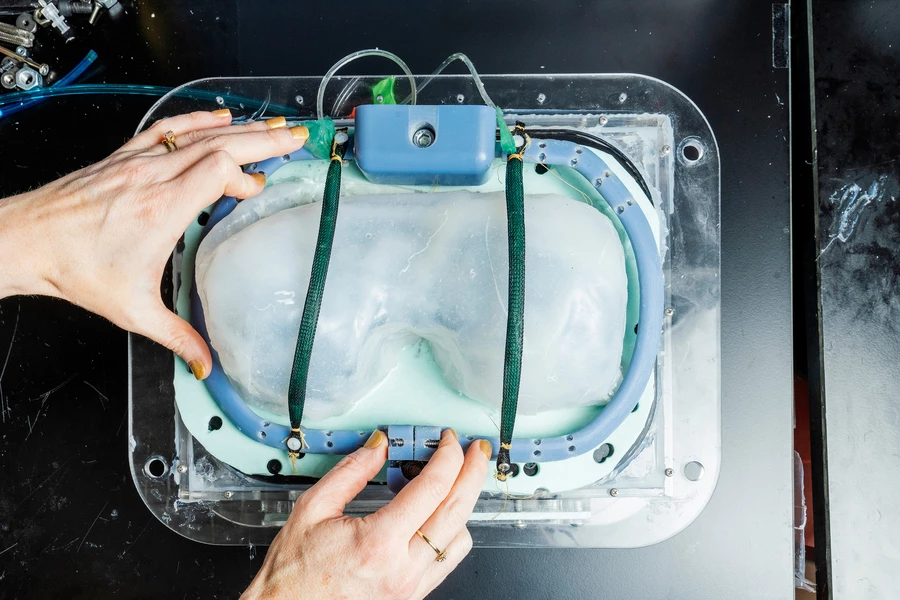It's a sad fact that people with conditions such as muscular dystrophy and ALS often have difficulty breathing, as their diaphragm muscle doesn't work properly. MIT scientists have set out to give that muscle a boost, with an implantable ventilator.
Located right below the ribcage, the diaphragm allows us to breath by rhythmically contracting and relaxing. As it contracts it also flattens, creating a vacuum that draws air into the lungs. When it relaxes, it returns to its default dome-like shape, pushing air back out.
In a conventional external ventilator, air is forced into the lungs via a mask or tracheostomy (a hole in the neck, that goes into the windpipe). By contrast, the implantable ventilator draws air in, by helping the diaphragm to contract.
The implant takes the form of two soft inflatable tubes that lie across the top of the diaphragm on either side from front to back, and that are anchored to the bottom of the ribcage. A thin airline runs from one end of each tube, out of the body and into a small pump/control unit. The latter could conceivably be integrated into a special belt or backpack (or perhaps even also implanted), allowing the patient to stay mobile.

Programmed to follow the patient's rate of respiration, the pump repeatedly sends air into the tubes – causing them to get fatter – then pauses, allowing them to deflate and revert to their narrower state. As the tubes fatten, they push down on the diaphragm, helping it to flatten and create a vacuum which draws air in. Once they deflate, they allow the diaphragm to move back up and push the air out.
When the implantable ventilator was tested on pigs with compromised diaphragms, it was found to increase the amount of air they could draw in with every breath. The effect was particularly pronounced when the pump was fully in sync with the natural contractions of the diaphragm, as the pigs were able to draw in three times as much air as they would without any assistance.
"This is a proof of concept of a new way to ventilate," said the lead scientist, Assoc. Prof. Ellen Roche. "There’s a long road before this will be implanted in a human. But it’s exciting that we could show we could augment ventilation with something implantable."
A paper on the research was recently published in the journal Nature Biomedical Engineering.
Source: MIT




